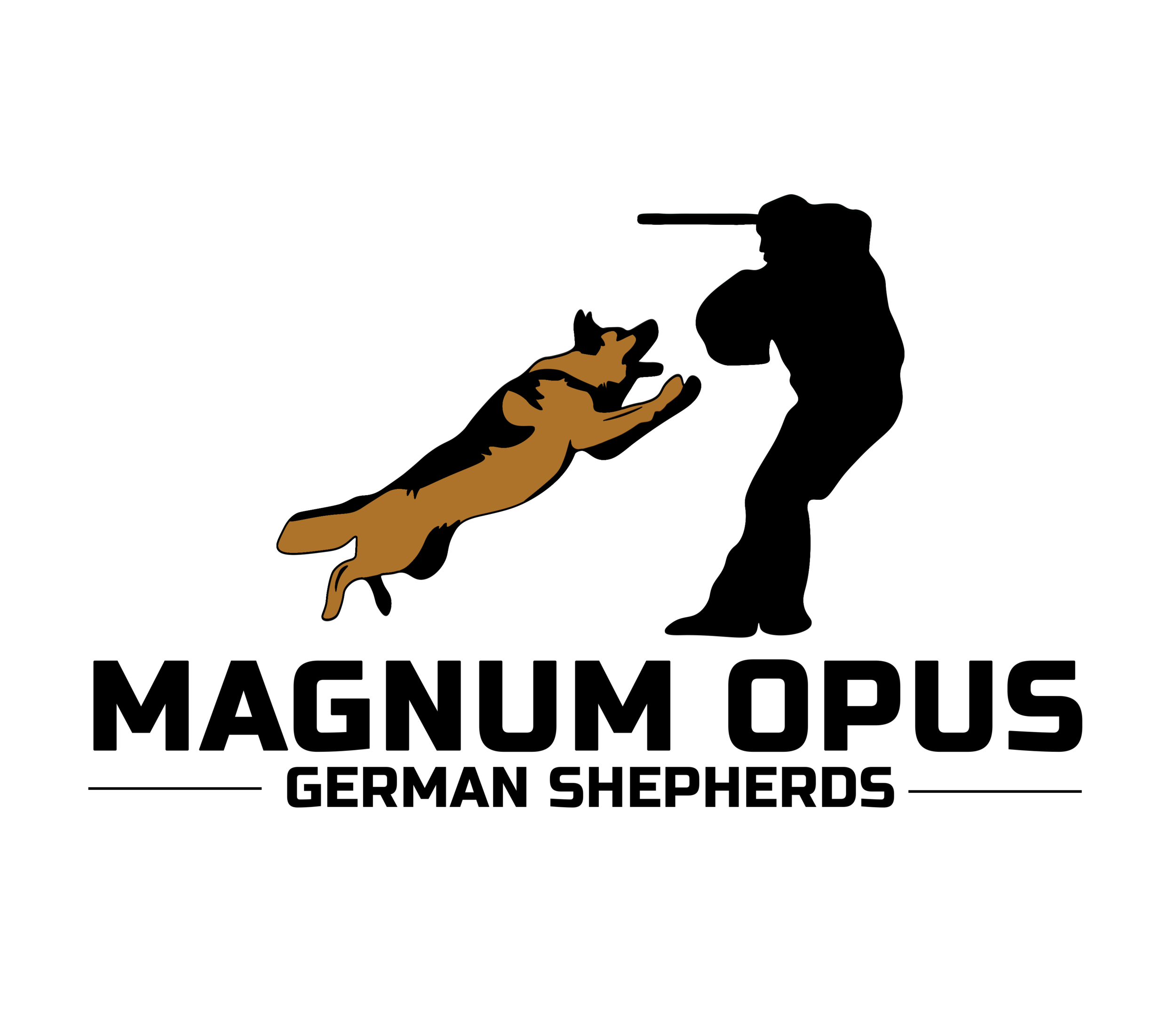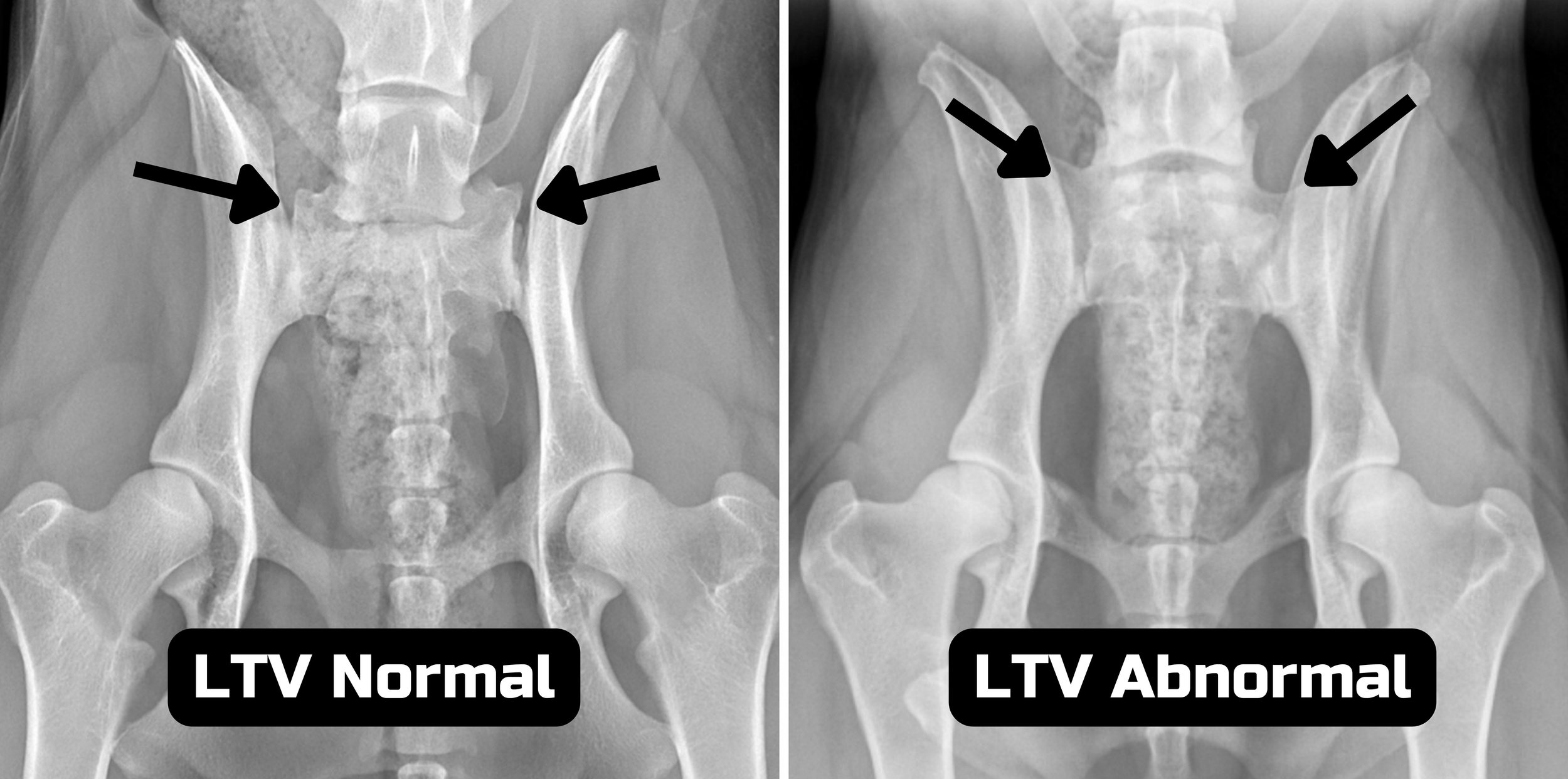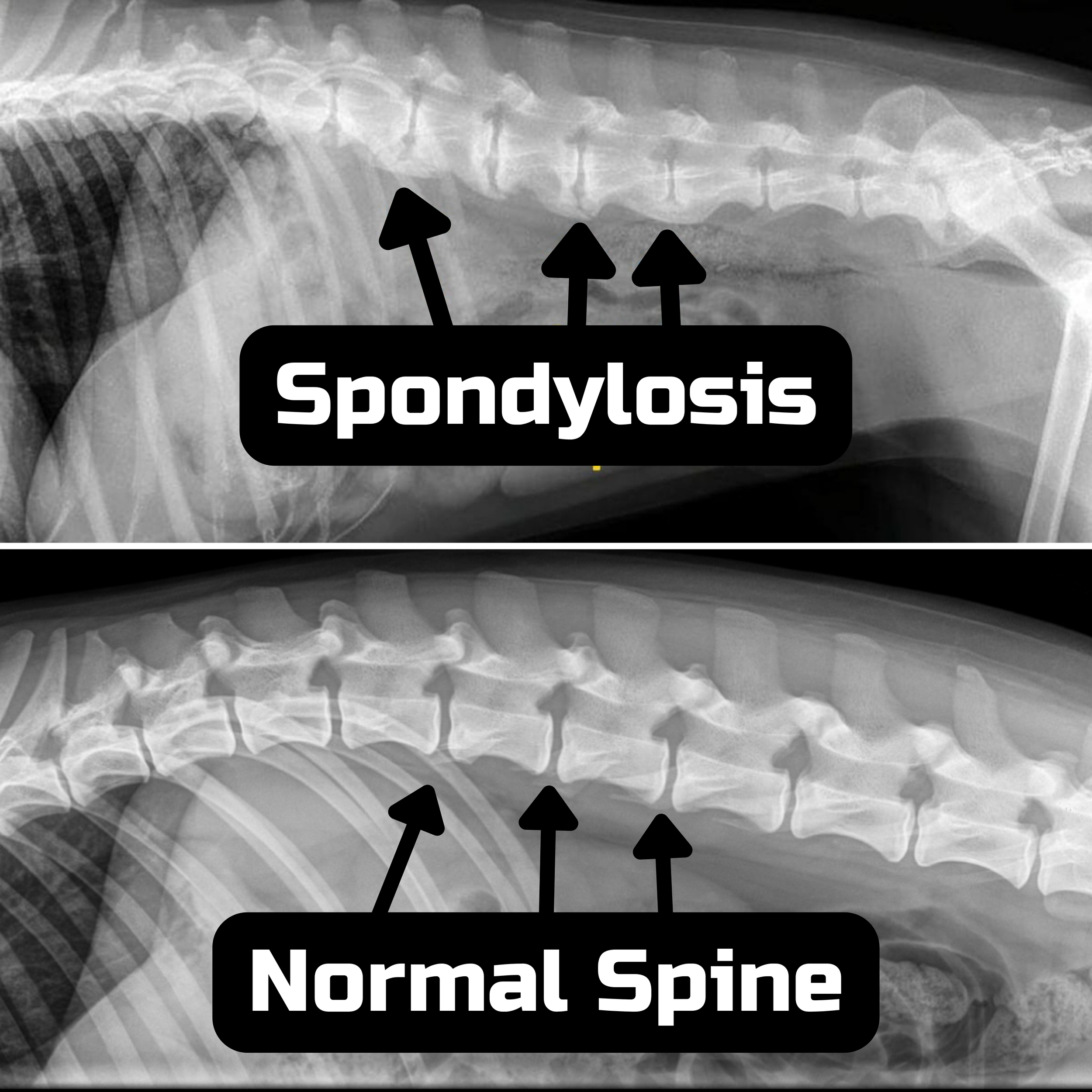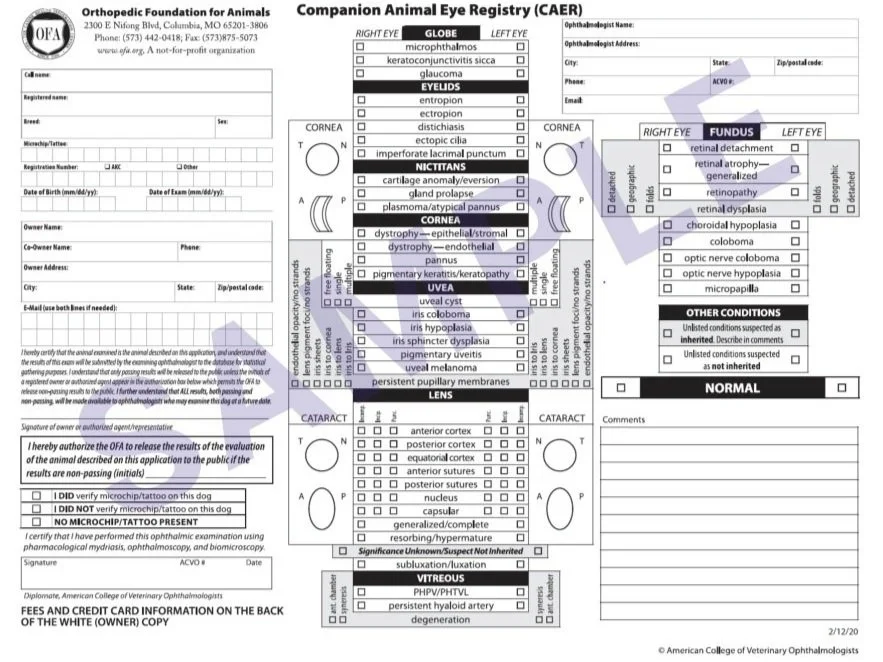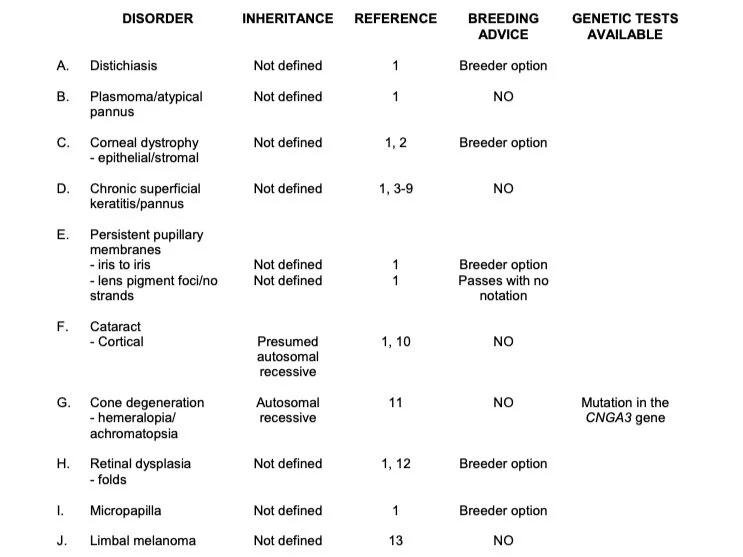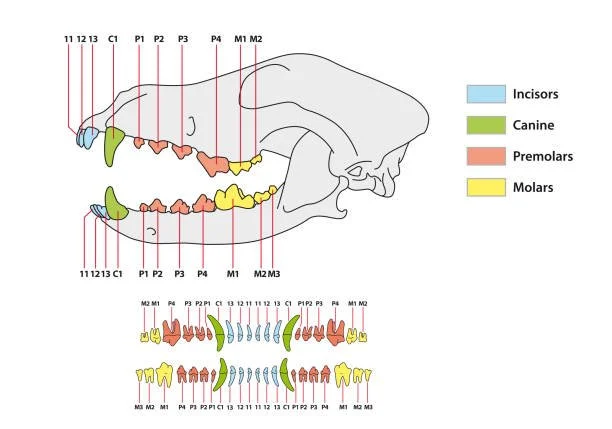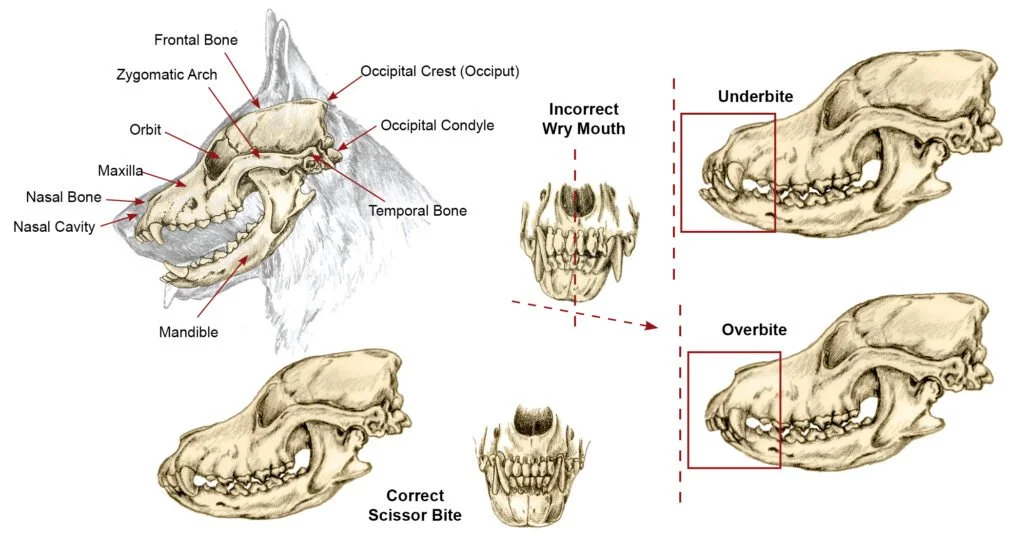Health Testing for the German Shepherd Dog
1.Hip and Elbow Dysplasia
The health testing for German Shepherd Dogs as recommended by AKC is to perform hip and elbow evaluations for the purpose of preventing dysplasia and other deformities. This means X-rays performed by a licensed veterinarian and then sending those x-rays to have them scored or evaluated by experts with either SV or OFA.
Breeding only “normal” or “passing” scores will not guarantee “normal” or “passing” offspring, unfortunately. Hip and elbow dysplasia has many environmental factors as well as genetic ones. It does, however, increase your chances. Selectively breeding passing dogs to passing dogs has been proven to reduce the prevalence of dysplasia over a longer period of time.
Explanation of Hip Testing Results:
Through OFA, the passing scores are : Excellent, Good, Fair and the failing scores are: Borderline, Mild, Moderate, and Severe. Through SV, the passing scores are: A1 (normal), A2 (nearly normal), A3 (still permitted, mild dysplasia) and the failing scores are: A4 (moderate dysplasia) and A5 (severe dysplasia).
Explanation of Elbow Testing Results:
Through OFA, the passing scores are : Normal and the failing scores are: Grade I, Grade II, and Grade III. Through SV, the passing scores are: A1 (normal), A2 (nearly normal), A3 (still permitted, mild dysplasia) and the failing scores are: A4 (moderate dysplasia) and A5 (severe dysplasia).
Pictured below: Progeny results of hip scores from of matings recorded through OFA, totaling 490,966 progeny from sires and dams with known hip scores.
Pictured below: Progeny results of elbow scores from of matings recorded through OFA, totaling 67,599 progeny from sires and dams with known elbow scores.
2. Degenerative Myelopathy (DM)
DM is a terrible disease that causes weakness and paralysis in the spine in many breeds, and affects a larger than average number of German Shepherds. An “affected” dog has a higher likelihood of developing this disease later in life. A dog that is a “carrier” of the mutation or “clear” of the mutation has a much lower risk. If two “carriers” are bred together, they could produce “affected” dogs, which is not desired. Please note, there is still lots of continuing research on this subject, and for this reason the results are not required for a CHIC number through OFA.
Explanation of DM Test Results:
Normal - this dog is homozygous N/N for the mutation, two normal copies of the gene. Although it is not impossible, it is very unlikely that this dog or its offspring will ever develop DM. Commonly referred to as “clear”.
Carrier (A/N): This dog is heterozygous A/N, with one mutated copy of the gene and one normal copy of the gene. This dog is also very unlikely to develop DM, but it is still possible. Commonly referred to as a “carrier”.
At-Risk (A/A): This dog is homozygous A/A, with two mutated copies of the gene, and is at greater risk of developing Degenerative Myelopathy (DM). This still does not mean the dog will actually get DM. Research is still ongoing to estimate what percentage of dogs testing as A/A will actually develop DM. Commonly referred to as “affected”.
Pictured below: Statistical progeny results for clear, carrier, and affected dogs.
3. Spine
German Shepherds can have quite a few disorders of the spine. OFA testing looks for disorders known as hemivertebra, butterfly vertebra, block vertebra, transitional vertebra (anywhere on the spine, not just in the lumbar-sacral region), spina bifida, and spondylosis. SV screens for Lumbar-Sacral Transitional Vertebrae (LTV/LSTV) and OCD (osteochondrosis).
Most commonly seen in German Shepherds (and the only disorders we will cover) are the Lumbar-Sacral Transitional Vertebrae (commonly abbreviated to LTV/LSTV), and changes to the spine known as Osteochondrosis/spondylosis (commonly abbreviated to OC/OCD/Spondy). LTV/LSTV is a fairly common anomalously formed vertebra that acts as both a lumbar and a sacral vertebra. It is located between the last anatomically regular lumbar vertebra and the sacrum (1–3). This can be viewed and diagnosed from an anterior hip x-ray. OC/OCD/Spondy are secondary structural reactions and changes to the vertebrates in the spine, caused by wear and tear, which results in the degeneration of the intervertebral disc. This can be viewed and diagnosed from a lateral x-ray of the dog’s spine. Spine evaluations through OFA or SV are currently recommended, but not required for this breed.
Explanation of Spine Testing Results:
Through OFA, the passing scores are : Normal, and the failing scores are: Abnormal. Through SV, the passing scores are: LTV Type 0 and OCD normal. The failing scores are: LTV1, LTV2, LTV3 and OCD abnormal.
Pictured below: Examples of different dogs with diagnosed LTV or OCD/Spondy compared with dogs who are free of those abnormalities
4. Cardiac
German Shepherd Dogs can have various cardiac diseases. Cardiac testing is not yet widespread for this breed, but OFA statistics show that about 6% of GSDs tested for cardiac have equivocal or abnormal results. Equivocal results are inconclusive and should be repeated. Abnormal results are listed as a grade 1 through 6 with a 6 being the most severe. Cardiovascular examinations through OFA are currently listed as recommended, but not required for this breed. There are different types of heart exams, the most common for this breed is an auscultation, which can be done by any veterinarian. Other types include an echocardiogram or electrocardiogram, typically performed by a specialist.
5. Thyroid
German Shepherd Dogs can also have thyroid diseases. Thyroid testing is not yet widespread for this breed, but OFA statistics show that over 8% of GSDs tested have equivocal or abnormal results. Equivocal results are inconclusive and should be repeated in 3-6 months. Thyroid screenings through OFA are currently listed as recommended, but not required for this breed.
6. Eyes
German Shepherd Dogs can be diagnosed with a wide variety of ocular disorders. Although eye testing is not yet widespread for this breed, OFA statistics show that over 8% of tested GSDs have at least one ocular disorder. Not all ocular disorders disqualify a dog from breeding, but all of them should be taken into consideration. Eye examinations through OFA are currently listed as recommended, but not required for this breed.
Thankfully, we do have a handy guidebook! The Blue Book, published by the Genetics Committee American College of Veterinary Ophthalmologists (ACVO), clearly outlines breeding guidelines based on each disorder, and gives clear insight as to which disorders can be reasonably assumed to be genetic or not.
Pictured below is the CAER form filled out by the ophthalmologist, as well as the German Shepherd-specific section in the aforementioned book that includes breeding advice for each specific disorder.
7. Dentition
Dentition is the arrangement and condition of the teeth and jaw in the German Shepherd Dog. Proper dentition is extremely important in this breed.
The AKC Standard reads, “Teeth - 42 in number - 20 upper and 22 lower - are strongly developed and meet in a scissors bite in which part of the inner surface of the upper incisors meet and engage part of the outer surface of the lower incisors. An overshot jaw or a level bite is undesirable. An undershot jaw is a disqualifying fault. Complete dentition is to be preferred. Any missing teeth other than first premolars is a serious fault.”
The SV standard is a little different. It states, “The teeth must be strong, healthy and complete (42 teeth according to the dental formula). The German Shepherd Dog has a scissor bite, i.e. the incisors must interlock like scissors, whereby the incisors of the upper jaw overlap those of the lower jaw. Occlusal overlay, overbite and retrusive occlusion as well as larger spaces between the teeth (gaps) are faulty. The straight dental ridge of the incisors is also faulty. The jaw bones must be strongly developed so that the teeth can be deeply embedded in the dental ridge. Dental faults: all deviations from scissor bite and dental formula insofar as it does not involve eliminating faults (see the following).” Eliminating dental faults are listed as, “Dogs with…lack of: 1 premolar 3 and another tooth, or 1 canine tooth, or 1 premolar 4, or 1 molar 1 or molar 2, or a total of 3 teeth or more. Dogs with jaw deficiencies: overshot by 2 mm and more, undershot, level bite in the entire incisor region.”
Dental evaluations through OFA or SV are currently recommended, but not required for this breed. However, a dental evaluation by a judge is required at all types of dog shows. It is wise to record a young dog’s dentition via official means (OFA dentition database or SV dentition record) once all adult teeth are fully erupted or once a dog turns 12 months old, to have on file in case any injury or accident should occur later in the dog’s life and disqualify them from shows.
Pictured below is a couple diagrams, labelling the different types of teeth and an illustration regarding proper jaw and bite structure.
